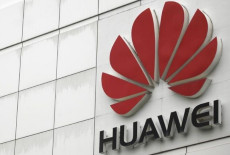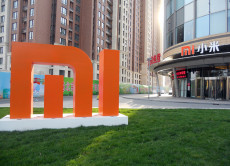Huawei and Xiaomi are the rock stars of Chinese high-tech. Coming from vastly different backgrounds and experience, they share one goal: Connect everything.
Huawei’s technological prowess in telecom and Xiaomi’s agility in China’s consumer electronics market illustrate both companies’ potential and their weaknesses. Understanding the differences offers a glimpse into the future — where China is guiding the global electronics industry.
First, the commonalities between the two Chinese companies:
1. Staying private
Neither Huawei nor Xiaomi is publicly traded. Huawei, in particular, has famously chosen to stay private since its foundation in 1987.


As Shao Yang, president of strategy marketing department of Huawei’s consumer business group, told us, being private has allowed Huawei to dodge the rat race of quarterly pressures and to take a long view. By chipping away at the global telecom gear market over 20 years, Huawei today holds a 50 percent market share in the 4G market in Europe, according to Yang.
Huawei’s revenue in 2014 was $45.5 billion, its profit at $4.5 billion.
Xiaomi, a 5-year-old startup, is also private, with $12 billion in 2014 revenue, up by 140 percent compared with the year before. Xiaomi sold 61 million smartphones in 2014, a whopping 227 percent increase from the company’s 2013 figure. According to IDC, Xiaomi became the world’s third largest smartphone vendor last year.
Xiaomi has never revealed its profitability. Many industry observers believe it razor thin.
While both companies are rapidly increasing market share, they’ve never had to detail the cost of getting there.
2. Most sought-after partner/investor in the industry
Drop Huawei’s name to anyone in the IoT world. Leading vendors in different industries are likely to leap at the opportunity for a partnership with Huawei as they devise their own “everything connected” business strategy. Yang told us, “Companies like Benz and BMW are glad to talk to us.”
Xiaomi, in consumer electronics, is not just the darling of the media. It’s also the most sought after investor many startups are looking for. Huami, who developed Mi band, is a good example. Xioami’s investment and support in defining the Mi band pushed the wearable startup into stardom in China.
3. Youth movement
The youthful energy Xiaomi emanates is natural. But the older company, Huawei, also takes pride in staying fit and young. With its employee retirement age set at 45 and an annual infusion of 10,000 graduates fresh out of college, Huawei keep its engineering workforce young, passionate and selflessly hard-working.
Similarities between the two companies, however, stop there. Huawei is a behemoth of 170,000 employees. Xiaomi is a startup with 8,000.
Key differences between the two companies in their business strategies are as evident as their difference in scale.
1. Hardware vs. Internet
The foremost difference is probably “how we think of hardware,” said Bin Lin, president and co-founder of Xiaomi. “At Xiaomi, we want to offer our hardware at amazing prices – almost at BOM cost.”
Just as Google never charges per search, Xiaomi’s interest is not in profiting from big markup on each hardware sale, he explained.
Instead, “we are interested in connecting the devices we sell to the cloud. We let the computers crawl the data — with your permission — and analyze your behavior, and find the information and services to make your life easier,” said Lin. In short, Xiaomi is going after the big data/service model established by Google and Facebook.
Xiaomi, however, is hardly indifferent to hardware. Xiaomi’s founders are fanatical about the details of their products and genuinely interested in how people use them. They just don’t regard them as a key source of future revenue.
Meanwhile, Huawei knows better than anybody else about matters related to connectivity, data servers and telecom gear. Their primary business, however, remains selling hardware gear.
2. Global vs. Domestic
Huawei has already crossed the borders to become one truly global vendor among all Chinese high-tech companies. Asked about its difference from Xiaomi, Huawei’s Yang pointed out that Xiaomi’s biggest market remains China. “They haven’t gone global.”
Xiaomi launched earlier this month its first e-commerce platform in the United States, selling Xiaomi’s accessories — smart wristbands, power banks, connected weight scales, etc. — directly to U.S. consumers, but sans Xiaomi smartphones.
Many suspect that a lack of Xiaomi IPR in smartphones might hinder the Chinese company’s forays into the Western market with its flagship phones. But Xiaomi’s president Bin Lin explained: “We’re still studying U.S. customer behavior. The new website is our first step.”
3. Organic growth vs. Investment spree
Huawei doesn’t believe in M&A. The employee-owned company is focused on “organic growth,” according to Yang. “We want to move fast without getting caught up in the arduous process of integrating different organizations,” he explained.
Xiaomi doesn’t do much M&A either — largely because it’s too small. But Xiaomi is rapidly expanding its portfolio and diversifying via a slew of investments. Xiaomi takes a minority stake in certain companies while keeping the relationship non-exclusive. Xiaomi stays deeply involved in “ecosystem” companies’ activities including everything from nailing down their focus to product definition and helping product launch on Xiaomi’s e-commerce platform.
4. IoT concept vs. IoT products
Huawei’s size and deep technical foundation fuels its full-bore pursuit of IoT in different market segments.
Huawei is seeking IoT partners on the implementation level. But its strategy is to work with a select few industry leaders in each product category — such as automotive, smart home and wearables.
Meanwhile, Xiaomi is rolling out connected products from Xiaomi’s ecosystem companies. Those products are featured with Xiaomi-designed connectivity module that contains Xiaomi’s service API. Xiaomi’s Lin told us: “The [IoT] concept remains only as a concept if we don’t make products. We think Xiaomi is good at making products, rather than Powerpoint presentations.”
5. Distribution channels vs. Direct to consumers
In getting into the smartphone business, Huawei had to pay costly price in learning how to work with distribution/retail channels in the consumer market. For Huawei who grew up in the B2B business, this B2C stuff was all new. Yang told us "channels almost destroyed us."
In contrast, Xiaomi, who was also a newcomer to the smartphone business five years ago, figured out a way to totally bypassed the intricacies of traditional distribution channels. They developed a strategy, from the very beginning, in selling their products directly to consumers via their own online platform. Further, they created a huge group of followers online.
Xiaomi's success, however, did not escape the notice of Huawei. Influenced by Xiaomi, Huawei caught on to the importance of creating “fans” for Huawei products and the company is now offering a place — online — for users to feel a sense of community.
6. Ren Zhenghei vs. Jun Lei
The two companies sit at opposite ends when it comes to their leaders.
Huawei’s founder and CEO is Ren Zhengfei, a former engineer in the People’s Liberation Army. He is known to be very secretive. One of his rare public appearances was earlier this year at the World Economic Forum in Davos, Switzerland.
In contrast, Xiaomi’s Jun Lei is an open book. He is vocal and passionate, frequently featured in the media, while his performance on stage during Xiaomi product launches have been often compared to Apple’s late CEO Steve Jobs.
7. Past vs. Future
On the surface, Huawei appears to represent the past of the electronics industry, while Xiaomi seems more futuristic.
There might be some truth to this analysis. In the pursuit of getting everything connected, using a business model that doesn’t leverage the openness of the Internet doesn’t make sense.
But the expansion of the IoT market, if it happens, will probably require elements represented by both Huawei — whose sheer bigness translate into market muscle — and Xiaomi, whose openminded vision and youthful agility bespeak the high hopes of IoT.
隐私保护 |
法律声明 |
在线留言 |
网站导航 |
网站地图 |
文档下载 | 咨询热线:0755-27524036 |
订阅
深圳纤亿通科技有限公司版权所有 转载必究 Copyright 2010-2019 poptimes CO.,Ltd. All rights reserved.
备案号:粤ICP备14020946号
友情链接: 光创未来| fiber168| 纤亿通光源放大器网站| 纤亿通光模块网站| 纤亿通保偏无源器件网站| 纤亿通OTN网站

